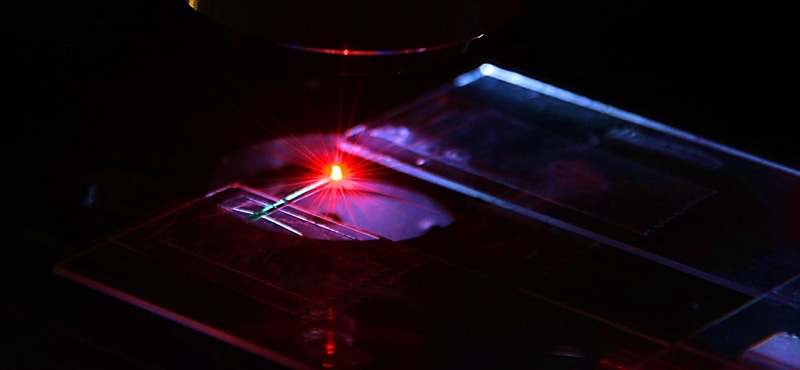
Turning blood into a laser emitter for drug testing, cancer treatment
By analyzing the light that was reflected back out, researchers observed cell structures and changes within the blood on the molecular level.

By analyzing the light that was reflected back out, researchers observed cell structures and changes within the blood on the molecular level.
University of Michigan researchers have successfully demonstrated a new technique that combines laser light with an FDA-approved fluorescent dye to monitor cell structure and activity at the molecular level. This could lead to improved clinical imaging and better monitoring of tumors and other cell structures. It could also be used during drug testing to monitor the changes that cells undergo when exposed to prospective new drugs.
The team, led by Biomedical Engineering professor Xudong (Sherman) Fan, shined laser light into a small laser cavity containing whole human blood infused with Indocyanine green, an FDA-approved fluorescent dye. By analyzing the light that was reflected back out, researchers observed cell structures and changes within the blood on the molecular level.
A key advantage of the new technique over current methods is the ability to process laser light—it can be amplified to make small changes easier to see or filtered to remove unwanted background noise. Current methods use similar dyes with infrared or visible light, relying on visible fluorescence to observe cell activity and making small changes can be difficult to see.
Currently, the researchers have only demonstrated the technique on whole blood outside the body. But they predict that in the future, they may be able to use it on tissue inside the body. This could enable better monitoring of cell activity and tissue properties inside the body, or enable a surgeon to precisely identify the edge of a tumor during guided surgery.
More info:
Source: